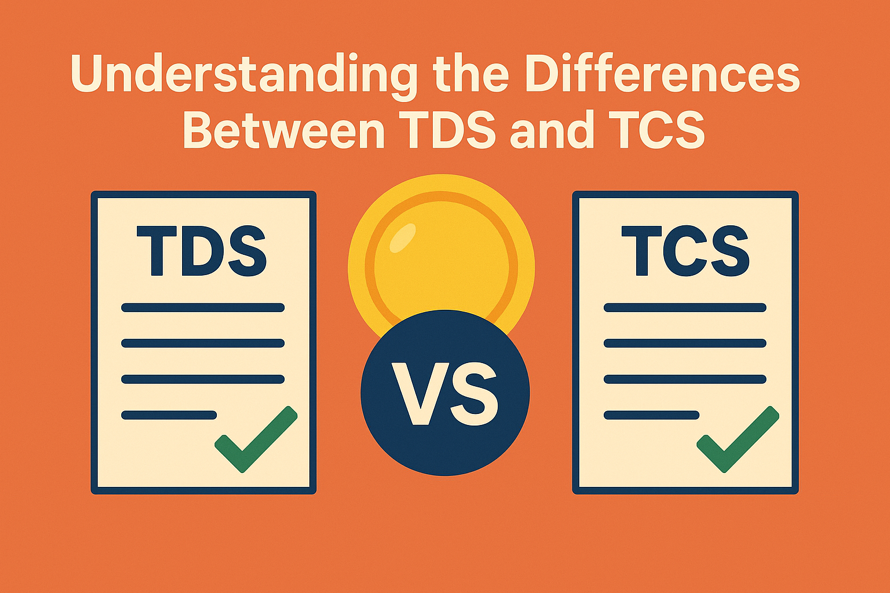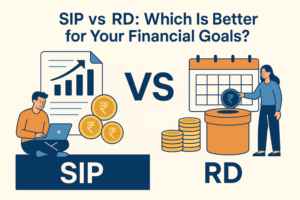
Taxes are unavoidable. Tax collection systems aim to capture revenue early in the flow of money. In India, two front-line mechanisms do this daily: Tax Deducted at Source and Tax Collected at Source. Both intercept money before it reaches the final recipient. Both serve government revenue needs and keep taxpayers aligned with tax laws. Both also impact cash flow for businesses and individuals.
This blog post explains the mechanics, the practical effects, and the places where TDS vs. TCS matter most. Consider this a clear map, with quick definitions, real examples, and actionable guidance for filing returns and checking credits.
Why TDS and TCS Matter in the Indian Tax System
TDS and TCS move tax collection upstream. That approach reduces tax evasion and smoothens revenue flow for the state. For taxpayers, these mechanisms create advance tax credits and require accurate reporting. For businesses, they shape supplier payments, invoicing practices, and accounting flows.
Think of TDS vs. TCS as two sides of a single policy coin: one side deducts, the other collects. Both link to statutory sections, reporting formats, and timelines. Ignoring either creates paperwork frictions and potential penalties. Awareness saves time and money.
Legal Frame work and Governing Sections
The Indian Income Tax Act defines both concepts and sets out duties. TDS finds its legal basis across multiple sections, such as Section 192 for salaries and Section 194 for various payments. TCS sits under Section 206C and its sub-sections for specific receipt types. Rules, rates, and thresholds evolve through annual Finance Acts and central board circulars.
Tax professionals and businesses monitor these changes closely since the law updates affect withholding rates, threshold limits, and filing schedules.
What is TDS (Tax Deducted at Source)?
Definition and Purpose
TDS means a payer deducts tax while making a payment to a payee. The payer deposits that tax with the government. The system shifts collection to the payment point, reducing the risk of final recipients skipping tax compliance. In short, the payer acts as the collector, the government receives revenue earlier, and the payee receives net income after deduction.
TDS covers many payment types, including salaries, professional fees, contract payments, rent, interest, and commission.
Common Scenarios Where TDS is Applicable
- Employers deduct TDS on salaries before releasing pay.
- Companies deduct TDS on contractor or consultant fees.
- Banks deduct TDS on interest payments above specified thresholds.
- Rent payments to landlords attract TDS at designated rates.
- Payments for the sale of property can attract TDS under specific sections.
These examples show how TDS appears across daily business runs and household finances. Every payment type uses its prescribed rate and threshold.
TDS Rates and Thresholds
Authorities publish rates and thresholds that depend on the nature of payment and recipient classification. For example, salaries follow applicable slab rates via Form 16 reporting. Professional services, commissions, and contract payments have fixed percentage rates. Some thresholds exempt small payments from TDS. The government updates thresholds during budget cycles and issues circulars for special conditions.
What is TCS (Tax Collected at Source)?
Definition and Purpose
Generally speaking, TCS works from the seller’s side, though there are exceptions. Sellers collect tax from buyers at the point of receipt for specified goods and transactions. The seller deposits the collected amount with the government. The buyer receives goods or services but pays an extra collection component to the seller, which then reaches tax authorities. TCS ensures that transactions of certain kinds carry tax collection duties with the seller.
Types of Transactions Attracting TCS
TCS applies to a defined list of transactions, such as:
- Sale of scrap, minerals, and timber.
- Sale of foreign remittances in specific categories.
- Sale of certain luxury goods or high-value items.
- Overseas remittances under designated schemes.
- Collections against e-commerce platform sales under specific rules.
Each transaction class carries a prescribed TCS rate and reporting requirement. Sellers must include a clear mention of TCS in invoices and maintain records to ensure accurate deposit and credit reporting.
TCS Rates and Thresholds
Rates for TCS vary by transaction and sometimes by buyer classification. Some transactions impose modest percentages; others apply higher rates. The law provides thresholds where small transactions escape collection, while large transactions attract full rates. Budget changes and policy updates can tweak these figures, so sellers must stay current.
Key Differences Between TDS and TCS
Clear comparisons help in daily finance operations. Below are core distinctions that determine roles, timing, and reporting.
Who Deducts or Collects the Tax
TDS assigns the duty of deduction to the payer. The payer retains responsibility to withhold and deposit tax. TCS assigns the collection duty to the seller. The seller collects the additional tax component from the buyer and then deposits it. In short, the party making payment handles TDS; the party receiving payment handles TCS.
Timing and Applicability
TDS occurs during payment or credit, whichever happens earlier, for payees across salary, contractual, and interest categories. TCS occurs at the time of receipt under specified business or commodity sale categories. Timing affects cash flow: TDS reduces the payee’s receipts immediately, while TCS increases the buyer’s cost at the time of purchase.
Nature of Transactions
TDS covers a wide range of income types: wages, professional fees, rent, interest, and commissions. TCS targets sale and receipt transactions identified by statute, such as specific goods, remittances, or e-commerce receipts. The nature of the transaction, therefore, determines which mechanism applies.
Compliance and Filing Requirements
Both require deposits of amounts in government accounts with unique challans and tax head codes. TDS filers issue Form 16 or Form 16A to payees and submit periodic TDS returns. TCS filers issue TCS certificates and file TCS returns. Both report details in e-filing portals and reconcile with annual information reports.
Practical Implications for Taxpayers
Understanding mechanics matters when preparing ITRs and managing cash flows. This section translates rules into everyday actions.
Impact on Income Reporting and ITR Filing
TDS deducted or TCS collected appears on the taxpayer’s consolidated tax statement and Form 26AS. Taxpayers use those credits when filing income tax returns. Accurate bank and ledger reconciliation ensures declared income matches credits in official records.
Claiming TDS and TCS in Income Tax Returns
Taxpayers claim TDS and TCS credits while computing tax liability. These credits reduce the total tax payable. When total deductions exceed the computed tax, the taxpayer can claim a refund through online income tax filing.
TDS vs TCS: Common Misconceptions
The tax world carries persistent myths. Clearing them reduces errors and paperwork.
Misunderstanding Roles of Deductor and Collector
A frequent confusion arises when businesses mix up payer and seller roles in complex transactions. The rule is clear: the person or entity who pays deducts TDS; the person who sells collects TCS.
Confusion Between Thresholds and Rates
Tax rates and threshold values differ by section. Tax administrators set thresholds for certain categories that exempt small transactions. Filing systems treat threshold and slab rules differently.
Knowing the Difference Can Save You Time and Money
TDS and TCS both aim to secure revenue early, but they serve different operational roles. Understanding who must act, when to deposit, how to report, and where credits appear will streamline tax compliance and protect cash flows. Businesses and individuals who master the TDS vs. TCS rules reduce reconciliation pain and optimize tax filings.
FAQs
Q1: Can a transaction attract both TDS and TCS?
Yes. A transaction can involve both mechanisms in limited scenarios. The law may require collection at source for the seller, while the buyer also faces deduction rules under a separate section. In such cases, careful documentation and cross-reference between certificates ensure correct credit in returns.
Q2: How do I claim a refund for excess TDS or TCS?
A taxpayer files an income tax return, showing total tax liability and recorded credits. If credits exceed liability, the taxpayer requests a refund within the return filing. Authorities process the claim after verification and credit reconciliation. Accurate bank details and proper documentation accelerate refunds.
Q3: What happens if TDS or TCS is not deducted or collected properly?
The law imposes interest and penalties on delayed or incorrect deposits. Authorities may demand payment along with interest and applicable charges. Businesses address defaults by rectifying returns, paying dues, and filing revised statements. Proactive reconciliation and correction minimize escalation.
Q4: Is PAN mandatory for all TDS/TCS transactions?
PAN is mandatory. Tax rules require quoting PAN in most transactions for correct credit allocation. When PAN is missing, the law prescribes higher withholding or collection rates. Ensuring PAN capture during KYC and invoicing improves tax credit accuracy.
Q5: Where can I check my TDS and TCS credits online?
Applicants can view consolidated statements on the income tax e-filing portal and Form 26AS via the TRACES portal. These official statements list TDS, TCS, and advance tax entries. Regular checks during the financial year help reconcile and correct discrepancies well before filing the return.







